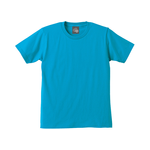- Home
- Photoshop ecosystem
- Discussions
- Substract duplicated pixels of 2 layers
- Substract duplicated pixels of 2 layers
Copy link to clipboard
Copied
Hello everyone,
I'm struggling with a problem for about 2 months now and I cant find an easy solution (or a solution at all). I have 2 layers/pictures and I want to substract one of the layers from the other layer, so that the result gives me exact the pixels that are different of both layers. Both pictures have no transparencies in it and the result cant have transperency in it too obviously. I cant use Blend mode (or atleast it doesnt work when I try it) because there should be no tolerance, if the pixel is exactly the same color in both layers, delete it, if there is even a tiny difference, keep it.
Here are 2 example layers


If you compare both images you can obviously see that a lot of pixels are the same in both pictures, but I need layer 2 to just have the difference in pixels, without all the pixels that stay the same in both layers.
 1 Correct answer
1 Correct answer



Explore related tutorials & articles
Copy link to clipboard
Copied
I am slightly confused by your requirement. You say the result cannot have transparency but then go on to say if the pixels are the same "delete it". Delete it and replace it with what if it is not to be transparent?
So to get the pixel differences use the difference blend mode. Pixels that are exactly the same will be RGB 0,0,0 and any that are different will anything above that.
To go on to make all pixels transparent and just keep the originals where there was no exact match, put both in a group and set the group "blend if", in layer styles to "this layer 1-255". Then clip a copy of the original layer to the group. It will only show where the original layers are not an exact match.
Dave
Copy link to clipboard
Copied
Sorry I just meant that I dont want to have some transparent colors, either its the same color or its no color (transparent).
Copy link to clipboard
Copied
The identical pixely might be fewer than you expect.
The Difference Blend Mode with a Threshold Adjustment Layer and Blend if-settings on a Group might be helpful.
Copy link to clipboard
Copied
I dont know what the fault in this procedure is, but it seems to be incorrect as there appear to be way more identical pixels as seen in the answer below, which seems to be correct. 🙂 But thank you for your effort, I really appreciate it.
Copy link to clipboard
Copied
A difference of even one value in one channel means: Not the same.
Copy link to clipboard
Copied



Susumu Iwasaki
Copy link to clipboard
Copied
Thank you very much for this answer. Could you ellaborate how to look up for a specific rgb value? I did everything as you stated and selected the values of rgb 0 0 0 with the magic wand and copied them into a new layer and it looks quite similar to yours and it actually works when I put it over the first layer but Im still wondering why there are differences between our pictures. I guess its some compression fault for the uploaded picture.
Copy link to clipboard
Copied
Hi,
Difference between actual image and screenshot?
Sample Size: Point Sample, Tolerance: 0, Anti-alias = off, Contiguous = off
Susumu Iwasaki
Copy link to clipboard
Copied
Hey,
Yes that was exactly the way I did it. And no I mean the difference between our results actually. I have way more identical pixels with exactly the same method, so I guess the downloaded pictures you used had sligthly different colors to start with.
Copy link to clipboard
Copied
layer2 over layer 1
layer2 mode = subtract
selection from RGB
save sesection as s1
layer1 over layer2
layer1 mode = subtract
selection from RGB
save sesection as s2
layer2 and layer1 mode = normal
load selection s1
load selection s2 (add to selection)
create mask from selection to layer1
stay on mask, edit->adjustment->treshold=1
copy mask to layer2
invert mask on layer2
you get layer1 (or layer2) in result.
invert mask on both layers = you will get anoter layer
Find more inspiration, events, and resources on the new Adobe Community
Explore Now



